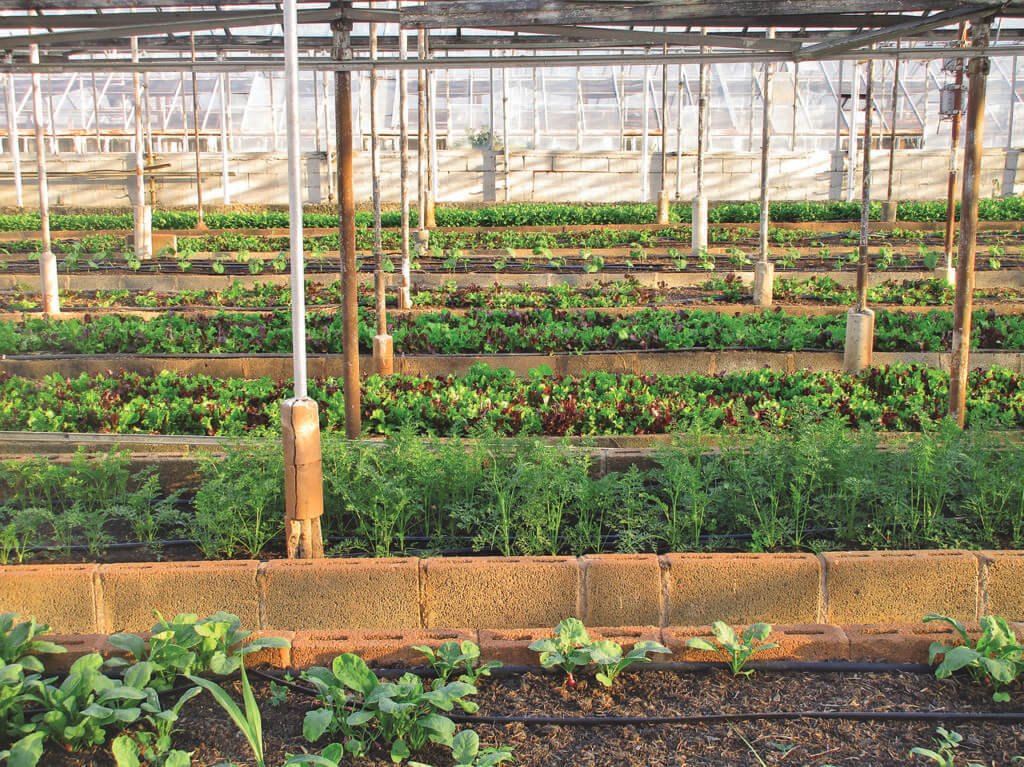You are about to discover the joys and benefits of urban gardening through this captivating book that will guide you on your journey to create your own oasis in the midst of the city. With expert advice and practical tips, this urban gardening book is your go-to resource for turning even the tiniest spaces into lush green paradises. Get ready to cultivate your green thumb and transform your urban dwelling into a thriving haven of plants, flowers, and fresh produce.

Chapter 1: What is Urban Gardening?
The definition of urban gardening
Urban gardening refers to the practice of growing plants, flowers, and vegetables in urban spaces such as rooftops, balconies, and small yards. It involves creatively utilizing limited space to create sustainable and productive gardens in the midst of urban environments. Urban gardening can take many forms, from small container gardens on balconies to rooftop gardens and community plots. It is a way for city dwellers to reconnect with nature, promote sustainability, and improve the quality of their urban surroundings.
Benefits of urban gardening
Urban gardening offers a range of benefits, making it an increasingly popular pursuit among city dwellers. Firstly, it provides access to fresh, homegrown produce, allowing individuals to enjoy nutritious and organic fruits, vegetables, and herbs without relying on store-bought options. Additionally, urban gardening helps to improve air quality by reducing pollution and CO2 levels. Plants act as natural air filters, absorbing carbon dioxide and releasing oxygen, thus contributing to a healthier and cleaner urban environment. Moreover, urban gardening can foster a sense of community by bringing people together through shared gardens or community projects. It offers opportunities for socializing, sharing knowledge, and collaborating with neighbors, ultimately creating a stronger sense of belonging and connection among urban residents.
Why urban gardening is becoming popular
Urban gardening has witnessed a surge in popularity in recent years, and several factors contribute to this trend. One reason is the increasing awareness of the importance of sustainable living and environmental conservation. As people become more conscious of their impact on the planet, they seek ways to minimize their carbon footprint and reduce food miles. Urban gardening offers a sustainable solution by enabling individuals to grow their own food and reduce reliance on industrial agriculture. Additionally, the growing interest in healthy eating and organic produce has fueled the popularity of urban gardening. People desire fresh, pesticide-free food, and by growing their own produce, they have greater control over the quality and safety of what they consume. Lastly, urban gardening provides an opportunity for city dwellers to reconnect with nature and experience the therapeutic benefits of gardening. It offers a way to escape the hustle and bustle of city life, find solace in greenery, and cultivate a deeper appreciation for the natural world.
Examples of successful urban gardening projects
Numerous successful urban gardening projects have demonstrated the potential and impact of urban gardening. One notable example is the High Line park in New York City. Built on an elevated railway track, this innovative park incorporates urban gardening elements, showcasing a variety of plants and greenery. By repurposing the railway track, the High Line has transformed a defunct industrial structure into a thriving green space, attracting locals and tourists alike. Another inspiring project is the Rooftop Republic in Hong Kong, which aims to transform unused rooftops into productive and sustainable gardens. Through their efforts, they have converted over 100 rooftops into thriving gardens, cultivating not only plants but also a sense of community and environmental stewardship. These successful projects serve as inspiration and show the immense potential of urban gardening in transforming urban spaces and enhancing the quality of life for city residents.
Chapter 2: Getting Started with Urban Gardening
Finding suitable spaces for urban gardening
When embarking on an urban gardening journey, one of the first steps is to find suitable spaces for gardening. In urban environments, space can be limited, but with a bit of creativity, there are various possibilities. Look for areas such as balconies, rooftops, windowsills, or even small corners in your yard that receive adequate sunlight. Assess the available spaces carefully, considering factors such as sun exposure, accessibility, and structural integrity. Balconies and rooftops are often popular choices for urban gardening, as they offer ample sunlight and can accommodate containers or raised beds.
Choosing the right plants for urban environments
Selecting the right plants is crucial for successful urban gardening. When choosing plants for urban environments, consider the available space, the amount of sunlight received, and the specific conditions of the urban environment, such as pollution or limited air circulation. Opt for plants that are well-suited to these conditions. For example, herbs like rosemary and thyme, as well as leafy greens like lettuce and spinach, thrive in containers and require minimal space. Additionally, consider cultivating plants that are native to the region, as they are often better adapted to the local climate and require less maintenance.
Understanding soil and composting in urban gardening
Urban gardening often involves working with limited or restricted access to soil. In such cases, understanding the soil requirements is essential. Evaluate the quality of the existing soil and assess if any amendments are needed. Container gardening typically requires a well-draining potting mix, while rooftop gardens may necessitate lightweight and low-moisture retaining soil. Additionally, composting plays a vital role in urban gardening, as it provides a sustainable way to enrich the soil. Consider composting your kitchen scraps or sourcing compost from local resources to improve the fertility of your urban garden.
Obtaining necessary permits and permissions
Before starting an urban gardening project, it is important to check if any permits or permissions are required by local authorities. Some cities may regulate urban gardening activities to ensure safety and compliance with building and zoning codes. Look into local guidelines or consult with the appropriate authorities to understand the regulations regarding urban gardening. Obtaining the necessary permits and permissions not only ensures compliance but also helps in creating a harmonious relationship with the community and neighborhood.

Chapter 3: Planning and Designing an Urban Garden
Assessing available space and sunlight
A crucial step in planning an urban garden is assessing the available space and sunlight. Understanding how much space you have and the amount of sunlight it receives is essential for determining what types of plants you can grow. Take measurements of the available space, noting any potential obstacles or obstructions. Evaluate the sunlight exposure by tracking the movement of the sun throughout the day. This information will guide your plant selection and help you create a garden that maximizes the use of available resources.
Creating a layout and design for the garden
Once you have assessed the space and sunlight, it’s time to create a layout and design for your urban garden. Consider the overall aesthetic you want to achieve and how the garden will fit into the existing urban environment. Think about the arrangement of plants, pathways, and any additional features, such as seating areas or decorative elements. A well-designed layout takes into account factors like ease of maintenance, efficient use of space, and accessibility. Sketch out your ideas or use online design tools to visualize and refine your garden plan.
Selecting containers and raised beds
Choosing the right containers and raised beds is essential for urban gardening. Containers come in various sizes, shapes, and materials, offering flexibility in terms of space and aesthetics. Factors to consider when selecting containers include drainage capability, insulation properties, and durability. Raised beds are another popular option, particularly for urban gardens with limited ground space. They provide better soil drainage, prevent soil compaction, and offer easy access for gardening activities. When choosing raised beds, consider materials that are safe, long-lasting, and visually appealing.
Conducting research on companion planting
Companion planting is an important aspect of urban gardening, as it promotes healthy plant growth and natural pest control. Researching and implementing companion planting techniques can help maximize the productivity of your urban garden. Consult resources or gardening books to learn about companion plants that complement each other in terms of growth habits, pest deterrence, and nutrient uptake. For example, planting marigolds alongside tomatoes can help repel pests and improve tomato growth. Companion planting not only benefits the plants but also adds visual interest and diversity to your urban garden.
Chapter 4: Essential Techniques for Urban Gardening
Watering and irrigation methods in urban environments
Proper watering and irrigation are essential for the success of an urban garden. In urban environments, where water availability may be limited, efficient watering techniques are crucial. Consider using drip irrigation systems, which deliver water directly to the plants’ roots, minimizing water waste through evaporation or runoff. Timers and moisture sensors can also be installed to ensure precise and adequate water delivery. It is important to monitor the moisture levels of the soil regularly and adjust watering accordingly, taking into account factors such as weather conditions and plant water requirements.
Managing pests and diseases organically
Urban gardens are not immune to pests and diseases, but it is possible to manage them organically. Avoiding the use of chemical pesticides is beneficial for both the environment and human health. Instead, employ natural pest control methods, such as companion planting, introducing beneficial insects, and practicing good garden hygiene. Regularly inspect plants for signs of pests or diseases and take appropriate action when necessary. Natural and organic pest control solutions, such as neem oil or insecticidal soaps, can be used sparingly if required.
Cultivating and maintaining healthy soil
Healthy soil is the foundation of a successful garden, and urban gardening is no exception. Regularly cultivate the soil to improve its structure, aeration, and drainage. Incorporate organic matter such as compost, leaf mulch, or well-rotted manure to enrich the soil with nutrients and promote beneficial microbial activity. Avoid compacting the soil by minimizing foot traffic or using raised beds. Regular soil testing can help assess nutrient levels and pH, enabling you to adjust fertilization accordingly. Maintaining healthy soil is an ongoing process, so continue to nurture and care for it throughout the season.
Pruning and training techniques for compact spaces
In compact urban spaces, proper pruning and training techniques are essential to maximize plant growth and optimize space utilization. Pruning helps manage plant size, promote air circulation, and enhance fruit or flower production. For vining plants like tomatoes or cucumbers, training techniques, such as trellising or staking, ensure vertical growth and prevent sprawling. Regularly remove dead or diseased plant parts to maintain plant health and aesthetics. When using pruning or training techniques, consider the specific needs and growth habits of each plant species to achieve the desired outcomes.

Chapter 5: Maximizing Limited Space in Urban Gardening
Vertical gardening techniques
Vertical gardening techniques offer innovative solutions for maximizing limited space in urban environments. By utilizing the vertical space, you can significantly increase the number of plants you can grow. Vertical gardening involves training plants to grow upward along trellises, walls, or structures. Install vertical structures such as mesh panels, hanging pots, or wall planters to support climbing plants. Vining crops like beans, peas, or grapes are excellent choices for vertical gardens. Additionally, consider incorporating vertical hydroponic systems or living walls to further optimize space and create visually striking displays.
Utilizing rooftop and balcony spaces
Rooftops and balconies are valuable spaces for urban gardening. Utilizing these areas effectively can help transform them into lush gardens and tranquil retreats. When gardening on rooftops, consider factors such as weight limitations, wind exposure, and irrigation requirements. Ensure that the rooftop structure is capable of supporting additional weight, including containers, soil, and plants. Balcony gardening requires careful consideration of space and sunlight availability. Make use of railing or wall-mounted planters, hanging baskets, or tiered shelving to optimize space and create a vertical garden oasis.
Creating multi-level and tiered gardens
Multi-level and tiered gardens provide opportunities to grow a variety of plants while maximizing space efficiency. By creating different levels or tiers, you can effectively utilize vertical space and create visually appealing gardens. Use platforms, steps, or raised beds of varying heights to create different tiers. This allows for more plants to be grown in a compact area and ensures even sunlight distribution throughout the garden. Incorporate trailing or cascading plants that spill over edges to create a lush and dynamic multi-level garden.
Innovative ideas for small space gardening
Innovation and creativity are key when it comes to small space gardening in urban environments. There are various innovative ideas that can help make the most of limited space. Consider utilizing hanging planters or vertical herb walls in kitchen areas to have fresh herbs readily available. Alternatively, repurpose old items such as shipping pallets or wooden crates to create vertical gardens or small raised beds. Window boxes, balcony rails, and even wall-mounted shoe organizers can be transformed into mini gardens. Experiment with unconventional containers like vintage buckets or colorful pots to add a touch of personality to your small space garden.
Chapter 6: Urban Gardening Supplies and Tools
Essential gardening tools for urban gardening
Having the right tools is crucial for urban gardening success. Some essential gardening tools to consider include a durable hand trowel, a hand pruner for precise pruning, a watering can or hose with a nozzle for effective watering, and a garden fork or spade for digging. Long-handled tools like a hoe or cultivator can be helpful for larger spaces or raised beds. Additionally, invest in a good pair of gardening gloves to protect your hands, and consider acquiring a soil pH testing kit for soil monitoring. Choose tools that are durable, ergonomic, and appropriate for the scale of your urban garden.
Selecting the right potting mix and fertilizers
Selecting the right potting mix and fertilizers is vital for urban gardening, where plants often rely solely on container or raised bed soils. Choose a well-draining potting mix that is formulated specifically for container gardening. Look for mixes that contain organic matter, vermiculite, or perlite to improve water retention and nutrient availability. When it comes to fertilizers, organic options are preferred to promote soil health and minimize environmental impact. Consider using slow-release fertilizers or organic compost to provide plants with a steady supply of nutrients. Additionally, explore organic liquid fertilizers or compost teas for nutrient boosts throughout the growing season.
Choosing suitable containers and planters
Choosing suitable containers and planters is crucial for urban gardening, as they directly impact plant health and aesthetics. Select containers made from durable materials such as plastic, terracotta, or fabric. Plastic containers are lightweight, inexpensive, and retain moisture well, but they may require additional insulation in extreme temperatures. Terracotta pots are porous and promote better airflow but can dry out quickly. Fabric containers are lightweight, breathable, and allow for excellent root aeration but may require additional support. Consider the specific needs of each plant when selecting container sizes and shapes, ensuring they provide enough root space and drainage.
Innovative technologies for urban gardening
Innovations in technology have introduced several exciting possibilities for urban gardening. Consider incorporating automated irrigation systems that utilize sensors and timers to monitor and deliver precise amounts of water to each plant. Smart gardening systems that connect to mobile apps can provide real-time plant health data, weather updates, and suggested care instructions. Indoor gardening systems with LED grow lights can extend the growing season and enable year-round cultivation on windowsills or in small indoor spaces. These innovative technologies not only streamline gardening tasks but also enhance the overall experience of urban gardening.

Chapter 7: Urban Gardening Maintenance and Care
Creating a watering and maintenance schedule
Maintaining a regular watering and maintenance schedule is essential for the health and productivity of an urban garden. Develop a watering schedule based on the specific needs of your plants, taking into account factors such as weather conditions and soil moisture levels. Check plants regularly for signs of over or under-watering and adjust accordingly. In addition to watering, incorporate tasks such as pruning, weeding, and fertilizing into a maintenance schedule. Regularly remove spent flowers or damaged plant parts, control weed growth, and monitor plant health for early detection of pests or diseases. Consistency and diligence in maintaining your urban garden will yield fruitful and enjoyable results.
Identifying and addressing common plant problems
Like any garden, urban gardens are susceptible to common plant problems such as pests, diseases, or nutrient deficiencies. It is important to be able to identify and address these issues promptly to prevent further damage or decline. Regularly inspect plants for signs of pests, such as chewed leaves, webs, or spots. Research natural remedies or organic pest control methods to address specific pest issues in a safe and environmentally-friendly manner. Educate yourself about common plant diseases and their symptoms, and take appropriate action, such as pruning affected parts or applying organic fungicides. Nutrient deficiencies can be corrected through proper fertilization or soil amendments. Timely intervention and proactive care are key to maintaining a healthy and thriving urban garden.
Harvesting and preserving urban garden produce
One of the most rewarding aspects of urban gardening is the opportunity to enjoy the fruits of your labor. Harvesting produce at the right time ensures optimal flavor and quality. Different plants have specific harvesting techniques, so educate yourself on the best practices for each crop. Leafy greens can be harvested by picking individual leaves, while root crops like carrots or beets are typically harvested by gently pulling them from the soil. Fruits and vegetables can be enjoyed immediately or preserved for later use. Explore various preservation methods such as canning, freezing, dehydrating, or pickling to extend the enjoyment of your urban garden produce throughout the year.
Seasonal care and garden cleanup
Seasonal care and garden cleanup are essential for maintaining the long-term health and productivity of your urban garden. At the end of each growing season, remove spent plants, weeds, and debris to prevent the accumulation of pests or diseases. Cut back perennials or herbs that may have become overgrown. Amend the soil with compost or organic matter to replenish nutrients and prepare it for the next growing season. Before winter, protect sensitive plants from frost by covering them or moving them indoors. Regularly review and adjust your seasonal care routine to ensure your urban garden remains vibrant and productive year after year.
Chapter 8: Community and Social Aspects of Urban Gardening
Building a sense of community through urban gardening
One of the remarkable social aspects of urban gardening is its ability to build a sense of community. Urban gardens provide opportunities for people to come together, share their passion for gardening, and form connections with neighbors. By engaging in communal activities like garden workdays, workshops, or shared harvest events, individuals can foster a sense of camaraderie and create a supportive gardening community. Collaborative efforts not only make gardening more enjoyable but also contribute to the overall well-being and resilience of the community.
Collaborative gardening and community-shared plots
Collaborative gardening and community-shared plots are valuable initiatives that help individuals without access to suitable gardening spaces or resources. Community gardens often allocate plots to individuals or families for their own cultivation. In these shared spaces, participants can learn from one another, exchange ideas, and build relationships. Collaborative gardening allows for the pooling of resources, skills, and knowledge, making it an accessible and inclusive way for people to engage in urban gardening. Working together with others, whether tending to communal raised beds or shared fruit trees, fosters a sense of teamwork and collective ownership, which can strengthen community bonds.
Educational programs and workshops
Education is a key component of urban gardening, and various educational programs and workshops have emerged to support and empower urban gardeners. These programs offer opportunities to learn about different aspects of urban gardening, including plant selection, soil management, pest control, and sustainable practices. Workshops provide hands-on experiences, enabling participants to gain practical skills and knowledge. Educational initiatives run by local organizations, universities, or community gardens often host guest speakers, offer guided tours, or organize specific training sessions designed to address the unique challenges of urban gardening. These programs are invaluable resources for both novice and experienced urban gardeners, continuously expanding their horticultural horizons.
Engaging children and schools in urban gardening
Urban gardening presents a unique opportunity to engage children and schools in hands-on learning experiences. Gardening can be incorporated into school curricula, providing children with valuable lessons in science, nutrition, and environmental stewardship. School gardens offer a practical and interactive way for children to learn about plant life cycles, food production, and healthy eating habits. Involving children in garden activities helps foster a connection to nature, promote healthier food choices, and develop a sense of responsibility and care for the environment. Urban gardening initiatives often collaborate with schools to support their efforts, providing resources, expertise, and mentorship to maximize the learning potential of these green spaces.

Chapter 9: Urban Gardening for Sustainable Living
Reducing food miles and carbon footprint
Urban gardening plays a significant role in reducing food miles and lowering carbon footprints. By growing food in urban spaces, city dwellers can contribute to a more localized and sustainable food system. Growing even a small portion of one’s food supply at home can reduce the need for transportation and the associated carbon emissions. Additionally, urban gardening reduces the reliance on industrial agriculture practices, which often involve the use of synthetic fertilizers and pesticides, further contributing to carbon emissions. By growing your own food, you can make a meaningful impact, no matter how small, in promoting sustainability and reducing environmental impacts.
Composting and recycling in urban gardening
Composting and recycling are integral components of sustainable urban gardening. Composting kitchen scraps, garden waste, and fallen leaves reduces the amount of organic material that goes to the landfill while simultaneously producing nutrient-rich compost for the garden. Incorporating compost into the soil improves soil structure, enriches nutrient content, and fosters good microbial activity. Recycling is another important practice in urban gardening, as it reduces waste and promotes a circular economy. Repurposing items such as containers, planters, or materials from construction sites reduces the demand for new resources and minimizes environmental impact. By embracing composting and recycling, urban gardeners can contribute to a more sustainable and regenerative approach to gardening.
Rainwater harvesting and conservation methods
Rainwater harvesting and conservation methods are crucial in urban gardening, where water resources may be limited or expensive. By capturing and utilizing rainwater, urban gardeners reduce reliance on municipal water supplies and promote water conservation. Install rain barrels or cisterns to collect rainwater from rooftops or drainage systems. This harvested water can be used for watering plants, reducing the strain on freshwater resources. Implementing water conservation techniques such as mulching, which reduces evaporation and retains moisture, helps further optimize water usage. By making efficient use of rainwater and conserving water, urban gardeners actively contribute to sustainable living practices.
Promoting biodiversity and urban wildlife
Urban gardening provides opportunities to promote biodiversity and support urban wildlife. By cultivating a variety of plant species, urban gardeners can create habitats and food sources for pollinators, birds, and beneficial insects. Selecting native plants and incorporating flowers that attract pollinators, such as bees and butterflies, helps support local ecosystem health. Additionally, creating features like bird feeders, insect hotels, or small ponds can invite diverse wildlife into urban gardens. Encouraging birds, bees, and other wildlife not only adds beauty and vibrancy to the garden but also contributes to the overall biodiversity and ecological balance of the urban environment.
Chapter 10: Showcasing Inspiring Urban Gardens
Profiles of successful urban gardening projects
The world is full of inspiring urban gardening projects that demonstrate the possibilities and beauty of urban gardening. From community gardens to rooftop farms, there are countless success stories to explore. Profiles of successful projects can highlight the different approaches, techniques, and innovative ideas employed by urban gardeners across the globe. These profiles can focus on the distinctive challenges each project faced and how they overcame them, sharing valuable insights and lessons learned. By showcasing successful urban gardening projects, aspiring gardeners can draw inspiration and gain practical knowledge, ultimately empowering them to embark on their own urban gardening journeys.
Case studies of urban garden transformation
Case studies documenting urban garden transformations provide valuable real-life examples of how urban spaces can be revitalized and transformed through gardening. These case studies can delve into the unique stories behind each garden, highlighting the various design choices, techniques used, and challenges encountered during the transformation process. They can showcase before and after pictures, revealing the significant impact and positive changes that urban gardening can bring to a neighborhood or community. By exploring case studies, urban gardeners can gain insights, learn from others’ experiences, and spark their own creativity in transforming their urban spaces into thriving gardens.
Interviews with urban gardeners and experts
Interviews with experienced urban gardeners and gardening experts add a personal touch to the article, offering unique perspectives and valuable advice. These interviews can delve into the motivations, challenges, and successes of urban gardeners, providing readers with practical tips and insights. Experts, such as horticulturists, landscape designers, or urban planning specialists, can offer their professional knowledge and expertise on various aspects of urban gardening. By hearing from those who have firsthand experience and expertise, aspiring urban gardeners can learn from their journeys, gain confidence, and receive guidance on their own urban gardening endeavors.
Photographs showcasing urban garden designs
Photographs are a powerful tool in showcasing the beauty and diversity of urban garden designs. Striking images of vibrant gardens, creative use of space, and innovative gardening techniques can inspire and captivate readers. Photos can highlight the unique features, such as vertical gardens, rooftop oases, or community plots, showcasing the immense potential and impact of urban gardening. By including photographs throughout the article, readers can visualize the concepts and gain a deeper appreciation for the aesthetic possibilities and transformative nature of urban gardening.

